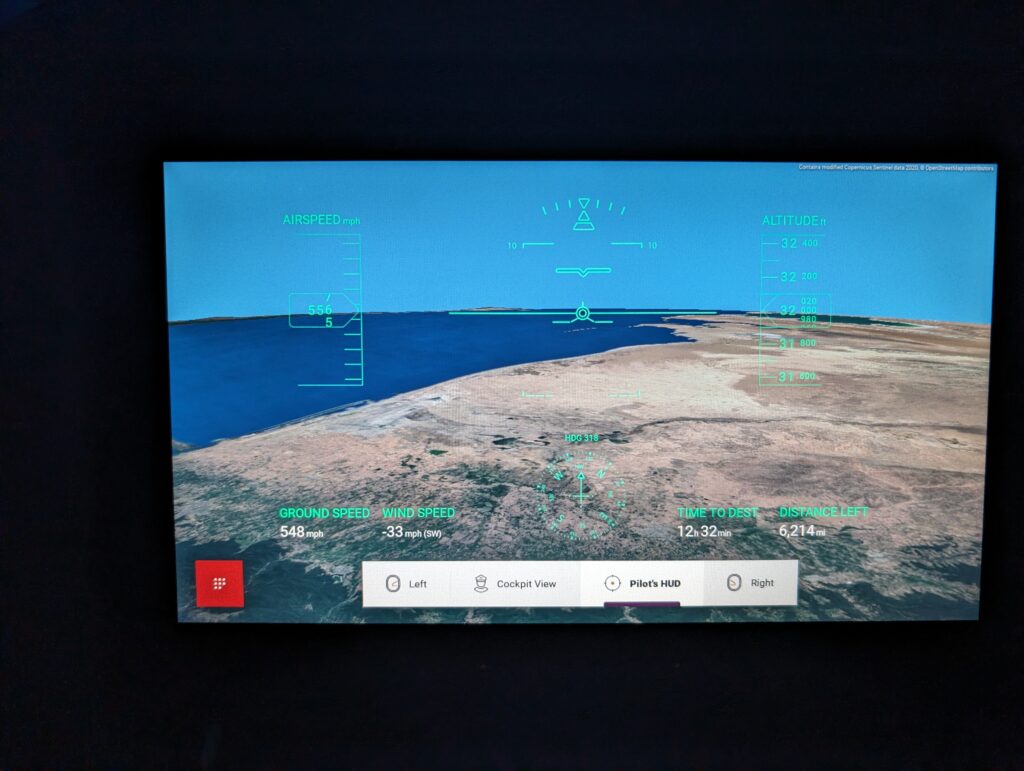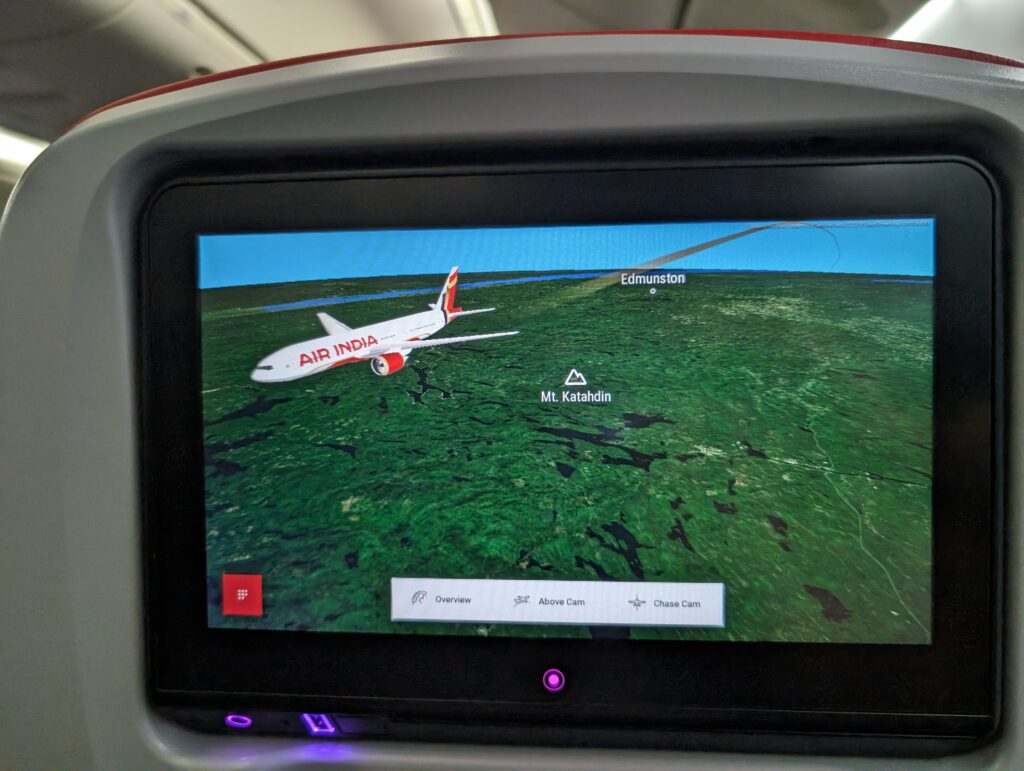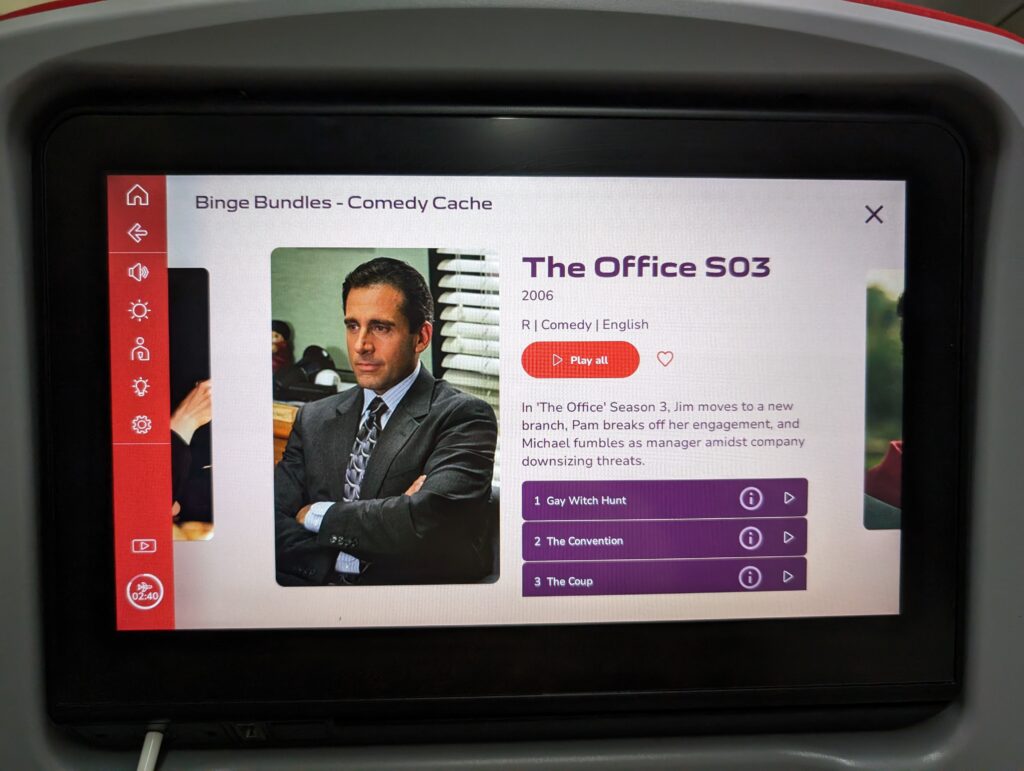 For in-transition Air India, inflight entertainment has been the source of numerous headaches and passenger complaints. From non-functional screens to dated content, problems with the carrier’s legacy solution are well documented.
For in-transition Air India, inflight entertainment has been the source of numerous headaches and passenger complaints. From non-functional screens to dated content, problems with the carrier’s legacy solution are well documented.
But the tired cabins of Air India’s existing Boeing widebodies will start to be refurbished mid-year, including with new IFE from nose to tail. The carrier today confirmed that Thales’ new AVANT Up IFE system, which features the French firm’s new 4K Optiq QLED smart displays, will be fitted not only to 40 aged 777s and 787-8s, but will also be linefitted to 11 brand new Airbus A350 and Boeing 787 twinjets from 2025.
In the meantime, however, Air India has started to take delivery of new A350s, originally destined for Aeroflot, with Panasonic Avionics’ eX3 IFE system on board. And it has rather famously leased — and is now flying — a cluster of ex-Delta 777-200LRs, which in 2018 received a major refresh by the US major including with new Panasonic IFE.
Until very recently, the ex-Delta LRs sported a very bare bones interim graphical user interface (GUI) with nary a moving map in sight. But on a recent flight from Mumbai to New York aboard a 15-year-old LR, your author got the chance to experience the IFE system’s new GUI, its vast new content library, and Panasonic’s stunning new Arc-branded 3D moving map.
Also breaking cover on the carrier’s initial batch of A350s, Arc serves as a sort of anchor to Air India’s new GUI on the LRs, allowing the carrier to add map-based data to many interactive features.
We talk a lot about aircraft interior design at Runway Girl Network. But my experience aboard the ex-Delta 777 (VT-AEE) highlighted the important role that IFE system GUI and map design play in driving a positive passenger experience.
Each passenger is greeted with a welcome screen that displays their seat number and offers a selection of languages. Diving into the system, Air India’s fresh branding and colors are immediately evident, with purple and red featuring prominently throughout the GUI.
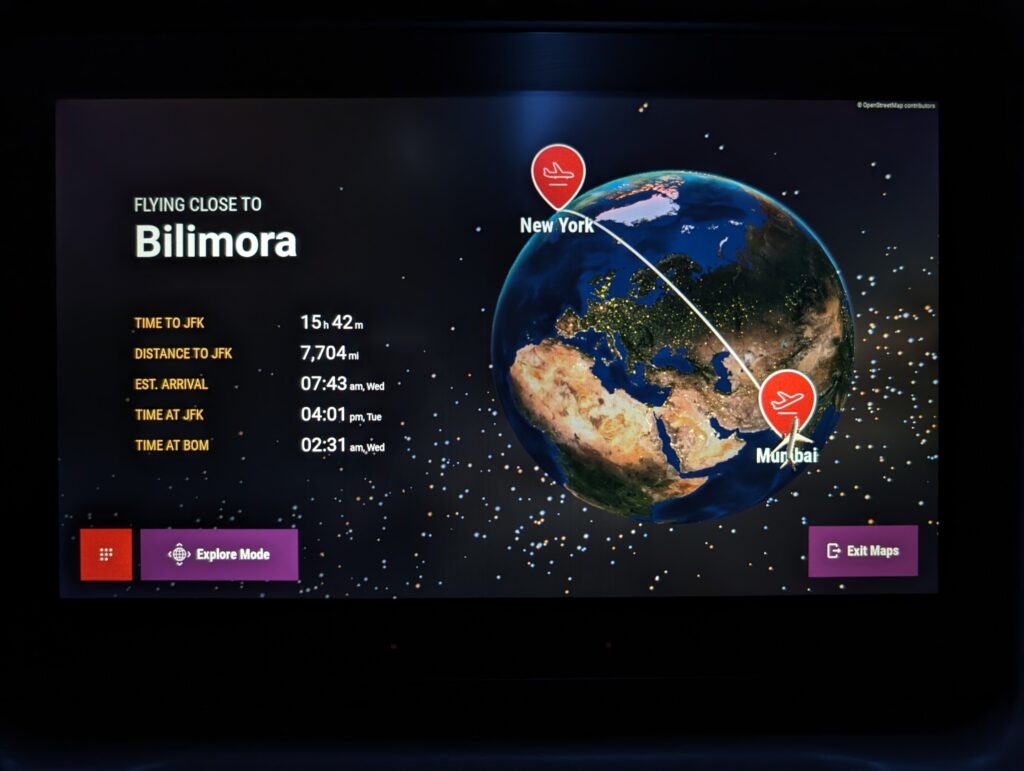 The multiple views, street level zoom and intuitive drag and zoom controls made this truly immersive experience an AvGeek dream.
The multiple views, street level zoom and intuitive drag and zoom controls made this truly immersive experience an AvGeek dream.
The street level view, though lacking street names, is powered by Openstreetmap, underscoring Arc’s ability to integrate other data.
Keen to explore a city in-flight or learn more about your destination’s major landmarks? No problem. Arc will take you there.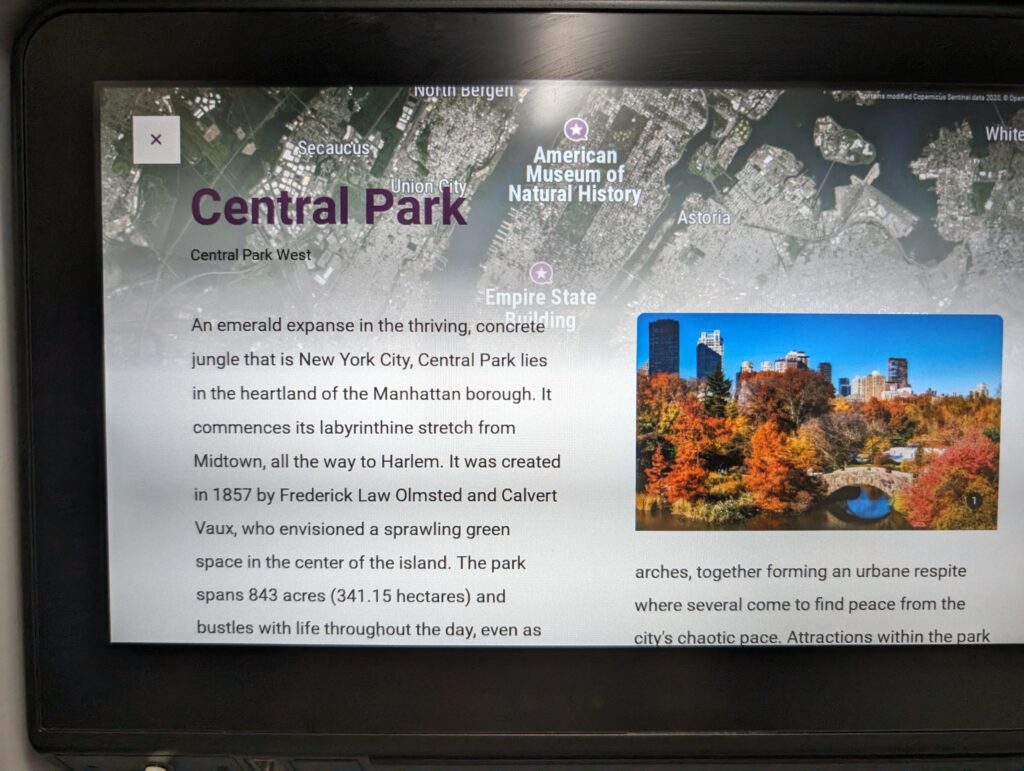
One can even access a pilot head up display (HUD) view via the seatback screen.
There are other cool details like a depiction of the rising sun when looking out a virtual window view.
 Perhaps amusingly, the virtual version of this leased 777-200LR was shown wearing the airline’s new livery, something that may not happen in real life. Note the purple backlit IFE ports, a nod to Air India’s new branding (these were previously blue to reflect Delta’s palette.)
Perhaps amusingly, the virtual version of this leased 777-200LR was shown wearing the airline’s new livery, something that may not happen in real life. Note the purple backlit IFE ports, a nod to Air India’s new branding (these were previously blue to reflect Delta’s palette.)
I spent a fair amount of time exploring the map as we flew across continents and the Atlantic ocean. This is apparently intentional, with Panasonic previously telling RGN that Arc “can really play a strong role in telling the story of travel”. And indeed it did.
Air India’s new content library, meanwhile, features over 2,200 hours of entertainment across formats and genres, including movies, TV, and audio. TV shows are also featured in entire seasons, enabling some true binge watching. That’s particularly important for an airline that flies several routes over 12 hours in duration.
Whilst there is a wealth of content, the myriad categories and subcategories made it a bit difficult to find movies and content.
There were a few hiccups. The system struggled with noticeable lag between screens and on taps. And at one point my screen went dark while the audio continued, a problem I remedied by turning the system off and on again. The map was also a bit laggy, leading me to wonder if perhaps the immersive software is pushing the circa 2018 hardware to its limits.
Also concerning was an announcement made during the flight that some seats, all at the rear of the plane, had non-functional IFE screens. As our aircraft was about 60% full, passengers at the rear were moved forward to help them pass the 16-hour flight time more easily.
All in all, however, Air India’s latest step in its transformation journey is a big one. An enhanced passenger experience can only help the airline as it wishes to lure frequent flyers away from Middle Eastern and European competitors.
It’s important to note that, at the time of writing, not all of Air India’s ex-Delta 777-200LRs featured this updated GUI, map and content. I was able to verify that VT-AEG, the aircraft I flew to India on, still features the older solution. Air India appears to be progressively updating the systems.
It will be interesting to see what Air India has in store for its new Thales Up IFE systems, when the hardware is retrofitted to its legacy 787s and 777s starting this year. Notably, Thales is promising “an interactive 3D map and immersive route-based programming” so Air India is clearly aware that this type of functionality is the future.
All images credited to the author, Karun Mukhi
Related Articles:
- Thales’ new QLED-based IFE system wows, needs content to match
- Air India flight on ex-Delta 777 shows airline on climb not cruise
- Air India goes for gold with world-class IFE content
- Maharaja lives on as Air India reveals soft product aboard new A350
- Panasonic’s Arc platform extends the inflight map beyond its borders
- FlightPath3D seeks to revolutionize PaxEx with AI companion
- Air India gets a Delta-shaped PaxEx upgrade with 777-200LRs







